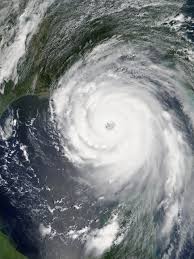Introduction: The Catastrophe of Hurricane Katrina
Hurricane Katrina, which struck the Gulf Coast of the United States in August 2005, is remembered as one of the deadliest hurricanes in American history. This catastrophic storm made landfall in Louisiana, particularly impacting the city of New Orleans, and forever changed the way the nation prepares for natural disasters. Its relevance continues today, as communities and governments reflect on the lessons learned from its devastating effects.
The Impact of Hurricane Katrina
Katrina first made landfall on August 29, 2005, classified as a Category 5 hurricane before weakening to a Category 3 as it hit land. The storm caused widespread destruction, with floodwaters breaching levees and submerging around 80% of New Orleans. It is estimated that over 1,800 lives were lost, and approximately 400,000 homes were damaged or destroyed.
The economic impact was staggering, with damages estimated at $161 billion, making it the costliest natural disaster in U.S. history. The aftermath revealed serious weaknesses in emergency preparedness and response, prompting criticism of local, state, and federal agencies for their handling of the disaster.
Response and Recovery
The federal government faced immense criticism for its slow response, leading to significant changes in disaster management policies. The Federal Emergency Management Agency (FEMA) reform was initiated to improve preparedness and response for future disasters. Moreover, the National Response Framework was established, emphasising a coordinated approach to disaster management.
In the years following Katrina, New Orleans underwent a lengthy recovery process. Significant efforts have been made to rebuild the infrastructure and restore the spirit of the community, with considerable investments in flood protection systems aimed at enhancing resilience against future storms.
Conclusion: Legacy of Hurricane Katrina
The legacy of Hurricane Katrina continues to influence government policy, infrastructure improvements, and community preparedness. The disaster underscored the importance of timely and effective communication during emergencies, as well as the need for robust environmental resilience planning. As regions around the world face increasing weather-related challenges, the lessons learned from Hurricane Katrina serve as a critical framework for understanding how to better manage disasters of similar magnitude.
Ultimately, the hope is that the memories of this tragedy fuel proactive measures, ensuring communities are more tightly knit and better equipped to face future challenges posed by natural disasters.


